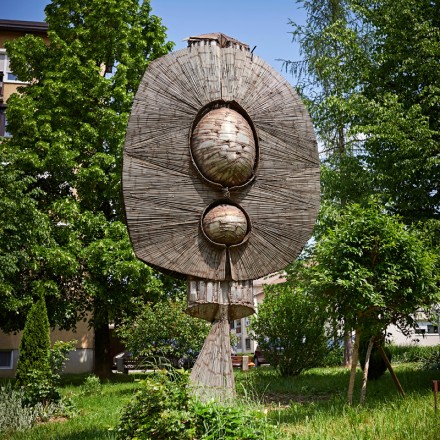
Slavko Tihec was born on 10 July, 1928. He studied sculpture at the Academy of Fine Arts, with Prof Karl Putrih, Prof Zdenko Kalin and Prof Boris Kalin, graduating in 1955 under the supervision of Boris Kalin. During his student years, he was active in the BE-54 group. After graduating, he returned to Maribor, where he worked as a freelance artist. In 1958, he travelled to Paris, where he continued his studies in in the studio run by graphic artist Johnny Friedlaender. He was a member of the art council of the international sculpture symposium Forma viva, in which he participated twice – in 1964 in Ravne na Koroškem, and in 1973 in Maribor (Rolled Ball/Zakotaljena krogla). He took part in numerous exhibitions at home and abroad, including at the Venice Biennial in 1966 and 1980. He was a member of the art group Grupa 69. From 1969 onwards, he taught in the department of sculpture at the Academy of Fine Arts in Ljubljana, where he became Full Professor in 1979. He received several awards for his work, including the Prešeren Fund Award in 1967, the Jakopič Award in 1973 and 1983, and the Prešeren Award in 1983. He is the author of numerous public memorials, including the monument at Osankarica (1960), the National Liberation Memorial in Maribor (1975), and the Ivan Cankar Memorial in Ljubljana (1982). He died in Ljubljana on 11 February, 1993.








